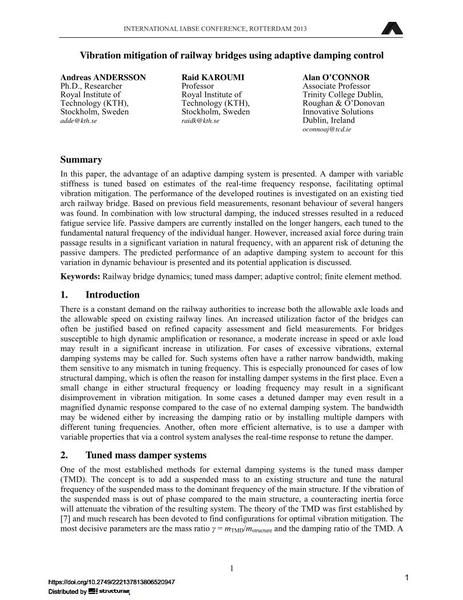Vibration mitigation of railway bridges using adaptive damping control

|
|
|||||||||||
Détails bibliographiques
| Auteur(s): |
Andreas Andersson
Raid Karoumi Alan O'Connor |
||||
|---|---|---|---|---|---|
| Médium: | papier de conférence | ||||
| Langue(s): | anglais | ||||
| Conférence: | IABSE Conference: Assessment, Upgrading and Refurbishment of Infrastructures, Rotterdam, The Netherlands, 6-8 May 2013 | ||||
| Publié dans: | IABSE Conference, Rotterdam, May 2013 | ||||
|
|||||
| Page(s): | 450-451 | ||||
| Nombre total de pages (du PDF): | 8 | ||||
| Année: | 2013 | ||||
| DOI: | 10.2749/222137813806520947 | ||||
| Abstrait: |
In this paper, the advantage of an adaptive damping system is presented. A damper with variable stiffness is tuned based on estimates of the real-time frequency response, facilitating optimal vibration mitigation. The performance of the developed routines is investigated on an existing tied arch railway bridge. Based on previous field measurements, resonant behaviour of several hangers was found. In combination with low structural damping, the induced stresses resulted in a reduced fatigue service life. Passive dampers are currently installed on the longer hangers, each tuned to the fundamental natural frequency of the individual hanger. However, increased axial force during train passage results in a significant variation in natural frequency, with an apparent risk of detuning the passive dampers. The predicted performance of an adaptive damping system to account for this variation in dynamic behaviour is presented and its potential application is discussed. |
||||
